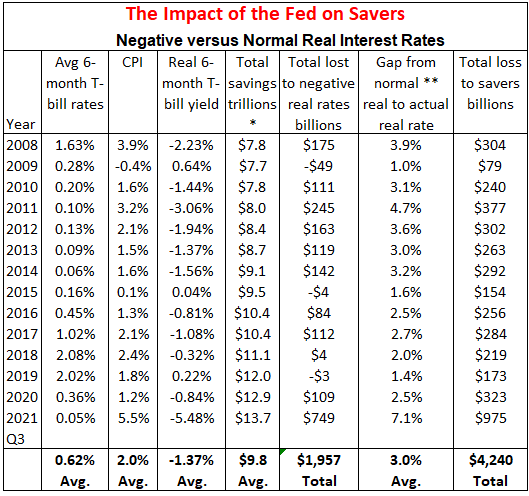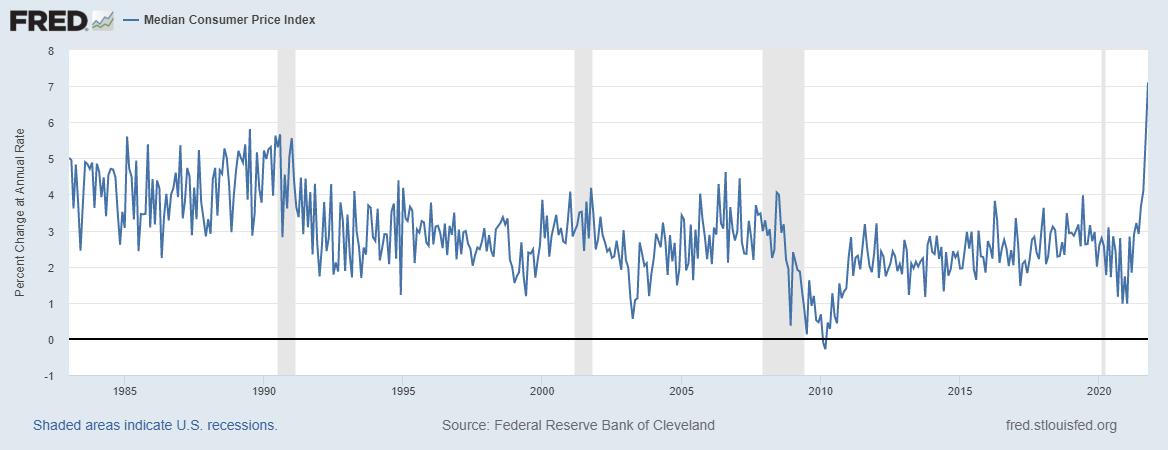
Tweedledee? Tweedledum? Either Way, You’re Paying the Bill
 Bullion.Directory precious metals analysis 15 November, 2021
Bullion.Directory precious metals analysis 15 November, 2021
By Peter Reagan
Financial Market Strategist at Birch Gold Group
Right now, Chairman Jerome Powell stands at the center of another major failure to live up to the Fed’s mandates to keep inflation in check (remember that 2% target?) and unemployment under control.
In a recent column appropriately titled “Federal Reserve Failure,” retired Congressman Ron Paul took the Fed to task on their monetary policy decisions. In it, he issued a criticism of their recent announcement to begin “tapering” billions in bond-buying:
It is unlikely that the Fed will stick to its plans to “taper” its purchase of Treasury bonds. The Fed’s Treasury bond purchases enable the federal government to run up the debt without increasing taxes or paying punishingly high interest on the debt.
The Congressional Budget Office projects that by 2030 the federal debt interest cost will more than double to 829 billion dollars. That is more than the government spent on the military in 2020!
In just a minute, we will cover why keeping interest rates low because the nation can’t afford to pay its bills is likely to have an impact on retirement savers like you. But first…
Tweedledee, or Tweedledum?
The normally even-handed Wall Street Journal leveled some harsh criticism of President Biden’s top two choices for Fed leadership: Governor Lael Brainard and Chairman Jerome Powell (or, as the WSJ called them, “Tweedledee and Tweedledum”):
Neither one deserves the job if you judge them by how well they have performed in their main duty of maintaining price stability. The Powell Fed has presided over inflation that it failed to predict and has been slow to address. The Fed’s professed inflation target is 2%, but the consumer price index rose 6.2% in October above a year earlier.
By any measure this is an historic failure. Mr. Powell’s credibility has been damaged with his persistent refrain, until recently, that inflation is “transitory.” His new monetary policy framework of average-inflation targeting, unveiled in August 2020, has been a bust.
Powell’s excuse is that a “narrow range of items where demand had soared and supply chains were constricted” are the primary cause of inflation. Now, this would make sense if, say, milk prices alone shot up 10,000% but other prices didn’t change.
Since milk prices make up 1.8% of the CPI calculation, a huge surge in that price alone would sway the entire index.
You can see what the WSJ called a “bust” reflected in the chart below. The chart examines the “median consumer price index.” This particular index uses the median, or middle, price from all the prices collected nationwide to calculate CPI. A look at the median CPI discards the highest and lowest prices with the goal of determining the most likely typical price for a particular item.
One glance debunks Powell’s excuse.
You can see that the price pressures have widened to so many items that consumers need that even the “median items” measured have spiked to levels we haven’t seen in 35 years.
Inflation this high isn’t likely to be transitory or temporary, nor does it seem to be responding to Powell’s new “flexible average inflation targeting” (FAIT).
In fact, another WSJ Wall Street Journal article described FAIT is better described as FAIL:
There’s no formal period over which the average is meant to be measured, but consumer prices have now risen exactly 2% annualized since the original 2% objective was introduced in 2012. Put another way: The whole miserable pre-pandemic “new normal” period of disinflation has been wiped out in just over a year of rising prices.
One year of rising prices has already achieved Powell’s stated goal of bringing inflation’s nine-year average to 2%.
Is this inflation spike going to subside? Not likely, and not soon.
Let’s get one thing straight: the Fed has has one major tool they can use, at any time, to halt inflation in its tracks. All they have to do is raise the federal funds rate (the benchmark for pretty much all interest rates). Simple.
That would cause rates to rise on all borrowing: mortgages, credit cards and the margin loans so loved by stock speculators. That would crash the stock market. Powell knows this, and he’s deliberately chosen this course of absurdly high inflation deliberately.
Folks on Main Street, people like you and me, hate inflation. That’s why Powell is so quick to blame supply chain snarls and other things he can’t control.
But he’s running out of excuses…
In the meantime, there’s one more thing you should know about inflation’s effect here on Main Street…
Inflation’s cost to Main Street since 2008: $4 trillion!
If the Federal Reserve were doing its job effectively, the average American would have more opportunities to make money from their savings rather than losing purchasing power.
If only. Instead, inflation more than outpaces the paltry interest payments on “safe” investments like CDs, savings accounts and money market accounts.
This handy table from a recent WolfStreet article reveals the details:

*Total household savings consists of time and savings deposits, money market fund shares, and Treasury bills ** Normal real rate is the average of 6-month Treasury bill yields minus CPI inflation, 1958-2007, =1.66% Sources: Federal Reserve Statistical Release, Financial Accounts of the United States – Z.1, U.S. Bureau of Labor Statistics, Consumer Price Index for All Urban Consumers: All Items in U.S. City Average, & Board of Governors of the Federal Reserve System (US), 6-Month Treasury Bill Secondary Market Rate. Image via WolfStreet
Wolf Richter also summarized what “keeping rates low” means for Main Street in 2021:
With inflation running at over 6 percent and interest rates on savings near zero, the Federal Reserve is delivering a negative 6 percent real (inflation-adjusted) return on trillions of dollars in savings. This is effectively expropriating American savers’ nest eggs at the rate of 6 percent a year.
“Expropriating” is a polite word for “stealing.” We’ve said it before, and we’ll say it again: Inflation is a tax that none of us voted for, and all of us pay.
Keep in mind that if Ron Paul and WSJ are correct, the Fed will keep rates low just for the U.S. to keep paying its bills.
Which means we’ll continue to pay the bill, and not just through taxes. This is how the Fed robs each and every one of us without changing the balance of our bank accounts.
It’s infuriating, isn’t it? Fortunately, there’s one thing you can do…
Take control of your savings now!
As inflation climbs from 6.2% to wherever it will go, now is a good time to consider some alternatives to this blatant theft.
That means diversifying some of your savings into assets that aren’t valued based on the whim of a council of unelected technocrats. Commodities tend to hold their value well against inflation. Physical precious metals like gold and silver are the top picks among commodities.
That’s because precious metals have had inherent value for thousands of years and act as a hedge against inflation. Plus, they aren’t controlled by any central bank or any government. Finally, they’re compact and easy to store (which we can’t say for other commodities, like cacao beans, crude oil or hard red winter wheat).
By diversifying your savings with precious metals, you’ll be doing everything you can to ensure your nest egg is set to endure the Fed’s pickpocket monetary policies.
Peter Reagan

Peter Reagan is a financial market strategist at Birch Gold Group, one of America’s leading precious metals dealers, specializing in providing gold IRAs and retirement-focused precious metals portfolios.
Peter’s in-depth analysis and commentary is published across major investment portals, news channels, popular US conservative websites and most frequently on Birch Gold Group’s own website.
This article was originally published here












 Material provided on the Bullion.Directory website is strictly for informational purposes only. The content is developed from sources believed to be providing accurate information. No information on this website is intended as investment, tax or legal advice and must not be relied upon as such. Please consult legal or tax professionals for specific information regarding your individual situation. Precious metals carry risk and investors requiring advice should always consult a properly qualified advisor. Bullion.Directory, it's staff or affiliates do not accept any liability for loss, damages, or loss of profit resulting from readers investment decisions.
Material provided on the Bullion.Directory website is strictly for informational purposes only. The content is developed from sources believed to be providing accurate information. No information on this website is intended as investment, tax or legal advice and must not be relied upon as such. Please consult legal or tax professionals for specific information regarding your individual situation. Precious metals carry risk and investors requiring advice should always consult a properly qualified advisor. Bullion.Directory, it's staff or affiliates do not accept any liability for loss, damages, or loss of profit resulting from readers investment decisions.

Leave a Reply